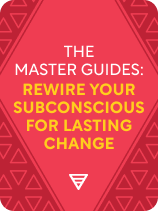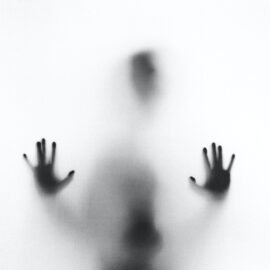

This article is an excerpt from the Shortform book guide to "The Master Guides: Rewire Your Subconscious for Lasting Change" by Shortform. Shortform has the world's best summaries and analyses of books you should be reading.
Like this article? Sign up for a free trial here.
How often have you tried to break a bad habit? Have you found yourself attempting new behaviors only to revert to old ones?
Many authors have tackled this common struggle. They agree that habits are unconscious decisions—that is, they’re decisions you make without actually thinking about them. The only way to change these unconscious decisions is to address them at their source: your subconscious mind.
Continue reading to learn about the link between the subconscious mind and habits and how to leverage it to make lasting changes.
The Subconscious Mind and Habits
What’s the connection between the subconscious mind and habits? You can train your subconscious to overwrite unwanted habits with wanted ones. We draw on research and methods from a range of authors, including self-help guru Tony Robbins, journalist Charles Duhigg, holistic psychologist Nicole LePera, and developmental biologist Bruce Lipton.
We’ll cover this information in four parts:
- Part 1 explains why the subconscious mind forms habits—to save mental energy and keep you safe.
- Part 2 clarifies why it’s often difficult to change habits—your subconscious mind permanently stores and resists changing them.
- Part 3 offers insights into how you can overcome your subconscious mind’s resistance to change.
- Part 4 presents advice and actionable methods for programming your subconscious mind to overcome unwanted habits and adopt new ones.
Part 1: Why the Subconscious Mind Is Key to Habit Change
Many authors agree that habits are unconscious decisions that influence many of your daily behaviors. However, their opinions differ on the extent of this influence:
- Charles Duhigg (The Power of Habit) asserts that unconscious decisions steer more than 40% of your daily behaviors.
- James Clear (Atomic Habits) argues that this influence extends to over 50%.
- Developmental biologist Bruce Lipton (The Biology of Belief) suggests that these unconscious decisions drive 95% of your daily behaviors.
Though the numbers may differ, the conclusion is clear: Habits significantly influence your behaviors and have an enormous impact on your life. When your habits align with how you want to live, they impact your life positively. However, when you’re entangled in habits you’d rather avoid, your life is controlled by negative influences. This impact can take a negative turn.
The first step to changing habits for the better is understanding why you engage in them in the first place. In this first part of the guide, we’ll cover three key principles of habit formation:
- Your subconscious mind forms automatic routines to save mental energy.
- Feedback loops reinforce automatic routines.
- Your subconscious mind relies on automatic routines to keep you safe.
This information will clarify why altering your subconscious mind is key to effectively changing your habits.
Principle #1: Your Subconscious Mind Forms Automatic Routines to Save Mental Energy
Duhigg clarifies why habits form and evolve into automatic behaviors: Every time you learn or do something new, you have to apply conscious effort to do it right. This process takes up a lot of mental energy and restricts your ability to think about other things.
He explains that your brain is designed to save mental energy on the things you do most often to avoid information overload and function efficiently. It does this by learning the sequence of actions it takes to achieve something. It then converts this sequence into an automatic routine and stores it so that you can perform your daily tasks automatically (without conscious thought). The more often you practice doing certain things, the easier it becomes for you to do them without thinking.
Where Does Your Brain Store Automatic Routines?
According to Joseph Murphy (The Power of Your Subconscious Mind), your mind is made up of two parts: the conscious mind and the subconscious mind.
1) Your conscious mind is your active mind. It contains all of the thoughts and feelings that you’re aware of at any given moment. You use it to judge your environment and to make choices and decisions based on these judgments.
2) Your subconscious mind is your passive mind. It’s a reservoir of thoughts, feelings, and memories that lies beneath your conscious awareness. It regulates all of your bodily functions, and it records and stores your every experience even when you’re not consciously paying attention—over 90% of your brain’s activity takes place in your subconscious mind. Murphy explains that your subconscious mind is responsible for creating and storing all your automatic routines.
Principle #2: Feedback Loops Reinforce Automatic Routines
Now that we’ve clarified why your subconscious mind creates automatic routines to dictate your behaviors, let’s explore how it also influences your thoughts and decisions.
Holistic psychologist Nicole LePera (How to Do the Work) says that, in addition to creating automatic routines for what you do, your subconscious mind creates automatic routines for what you think—how you perceive and interpret all of your experiences. It creates these routines based on what you think and feel most often.
According to Murphy, your subconscious mind creates these routines impersonally—it doesn’t judge what you habitually think or feel. However, though your subconscious mind doesn’t judge your habitual thoughts and feelings, it does create associations between them. These associations enable your subconscious mind to quickly identify and classify everything it perceives in your environment.
Maxwell Maltz (Psycho-Cybernetics) adds that, once it’s created an association, your subconscious mind influences you to automatically think and behave in ways that reflect and reinforce that association. It does this by creating feedback loops: It triggers your emotions, which colors your perceptions and interpretations of your environment, which leads you to react in specific ways to stimuli.
The feedback loop continually reinforces the association: Your subconscious mind’s interpretation of your environment justifies your habitual thoughts, feelings, and behaviors—and your habitual thoughts, feelings, and behaviors reinforce the way your subconscious mind perceives your environment.
Part 2: Why Unwanted Habits Are Difficult to Break
While automatic associations and routines (we’ll refer to both as “routines”) offer many benefits, such as keeping you safe and saving your mental energy, Duhigg points out a significant drawback: Your brain permanently stores these routines.
LePera adds that, once your subconscious mind creates and permanently stores a routine, it categorizes it as a part of your internal makeup—when your subconscious mind must make a decision, it uses the routine like an instruction manual instead of appealing to your conscious mind.
Maltz points out the problem with this setup: Your conscious goals often differ from your internal programming. In other words, you may decide to adopt a new habit, but deep down, your subconscious mind may not be programmed to sustain that habit because it has stored conflicting routines. This conflict between your conscious goal and your internal programming traps you in a loop of attempting new habits and reverting to old ones.
Why Conscious Goals Conflict With Internal Programming
Why does this incongruence between your conscious goals and your internal programming occur? Self-help guru Tony Robbins (Awaken the Giant Within) suggests that, at some point, your subconscious mind associated your conscious goals with pain. For example, previous attempts to adopt healthy eating as a habit left you feeling deprived. Your subconscious mind categorized this feeling as painful and something you should avoid. On the other hand, each time you indulged in junk food, you felt satisfied. Your subconscious mind categorized this feeling as pleasurable and something you should move toward.
How Your Subconscious Mind Steers You Away From Pain
LePera argues that, since your subconscious mind believes that your automatic routines keep you safe (away from pain), it resists any attempts to change them. This resistance takes the form of mental and physical discomfort that you experience each time you attempt to deviate from your default patterns. Your subconscious mind creates this discomfort to convince you to revert to your automatic routines—even if those routines cause you emotional or physical harm, the subconscious mind considers them “safe.”
Part 3: It Is Possible to Change Your Automatic Routines
While you can’t delete unwanted automatic routines from your mind, Duhigg argues that, through self-awareness and conscious control, you can override them with new automatic routines that align with the habits you want to practice.
In The Law of Success, Napoleon Hill explains that your subconscious mind is malleable and adapts to reflect your habitual thoughts. This means that, by consciously controlling your habitual thoughts, you can retrain your subconscious mind into alignment.
Murphy clarifies why taking control of your thoughts can retrain your subconscious mind: Your conscious mind is active and your subconscious mind is passive. Even though your subconscious mind creates your automatic routines, it can only follow the habitual conscious thoughts—or in other words, instructions—from your conscious mind.
Maltz adds that thoughts are subjective and may or may not be true. But, the more often you think specific thoughts, the more your subconscious mind accepts them as truth.
Take Small Steps to Overcome Your Subconscious Mind’s Resistance
But, what about your subconscious mind’s resistance to change? Though changing your beliefs and behaviors will create discomfort, LePera suggests that you can minimize and overcome the discomfort by taking small daily steps to consciously address your thoughts and behaviors. Small daily changes will add up and eventually lessen your subconscious mind’s resistance to change.
Part 4: Align Your Subconscious Mind With Your Chosen Habits
Hill suggests that cultivating a positive attitude helps overwrite unwanted automatic routines with more productive ones. He explains that your attitude toward life determines the nature of your habitual thoughts—that is, whether they’re negative or positive—and the overall impression they make on your subconscious mind. This impression then influences your ability to act in alignment with your chosen habits.
Murphy adds that your subconscious mind operates according to your expectations: If you cultivate a positive attitude, you’ll naturally form positive expectations about adopting your chosen habit, and your subconscious mind will amend your automatic routines to reflect these expectations.
Certain methods, when combined, will help you think more positively about your chosen habits—and make your subconscious mind want to adopt them. You should use affirmations repeatedly, imagine the benefits of your new habits, adjust your beliefs to reflect your new habits, and relax your mind.
Lastly, you should behave in ways that reflect your chosen habits. Your subconscious mind creates routines based on what you habitually do as well as what you think and feel. Dispenza puts it like this: Doing things the same way every day trains your subconscious mind to always expect the same things and to reinforce the status quo. This means nothing in your life can change unless you change your behaviors.
Maltz offers practical advice for changing your behaviors and, by extension, your habits: Begin with what you can realistically achieve. He explains that you’ll find it easier to complete small, achievable actions. And each time you do so, you’ll feel pride and boost your self-confidence. These positive feelings will train your subconscious mind to associate your new behaviors with pleasure. This in turn will create a positive feedback loop that will reinforce the new habits you want to adopt.

———End of Preview———
Like what you just read? Read the rest of the world's best book summary and analysis of Shortform's "The Master Guides: Rewire Your Subconscious for Lasting Change" at Shortform.
Here's what you'll find in our full The Master Guides: Rewire Your Subconscious for Lasting Change summary:
- Why the only way to change a bad habit is to rewire your subconscious
- Methods from experts such as Tony Robbins, Charles Duhigg, and Nicole LePera
- Why it's so important to take time for physical relaxation






